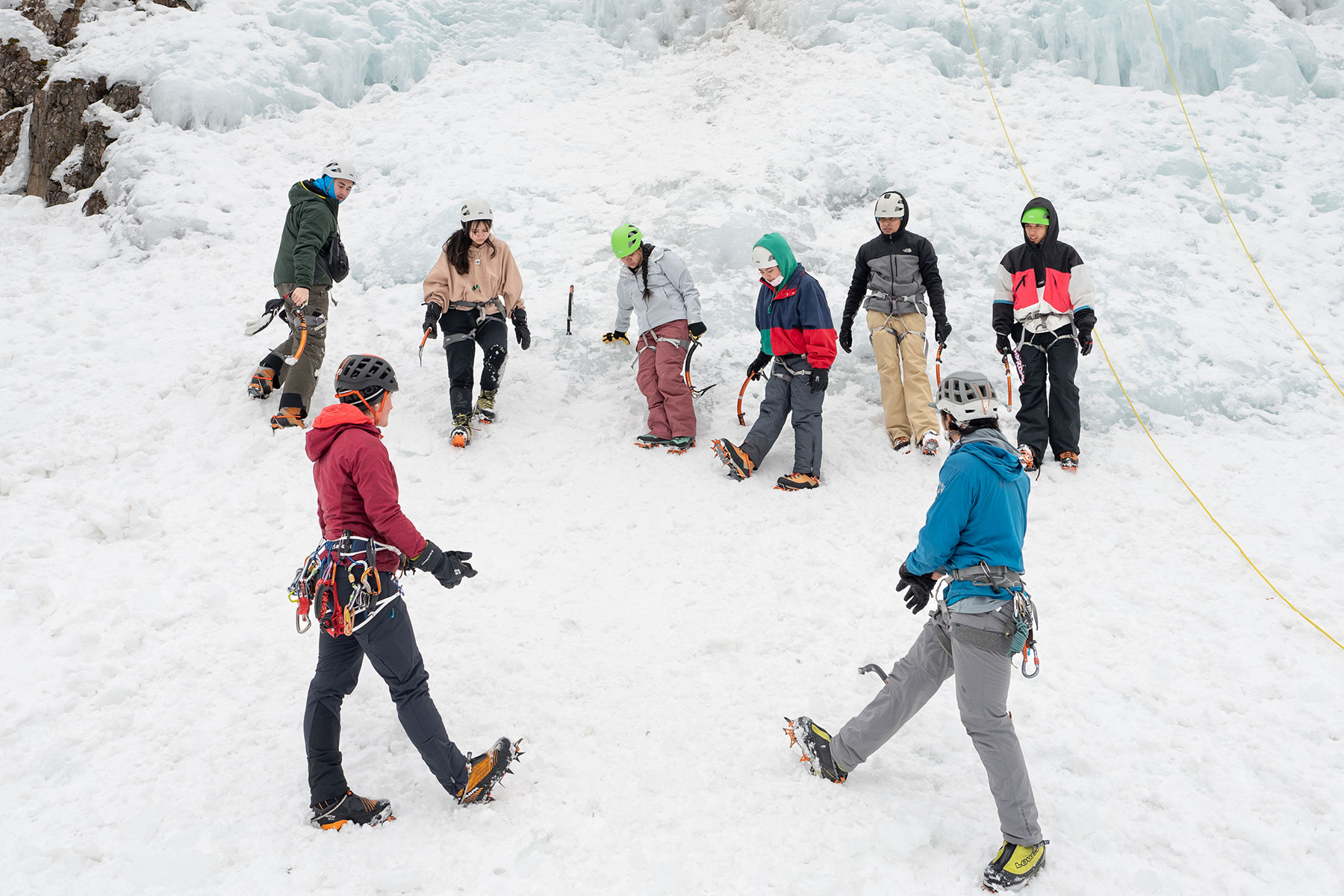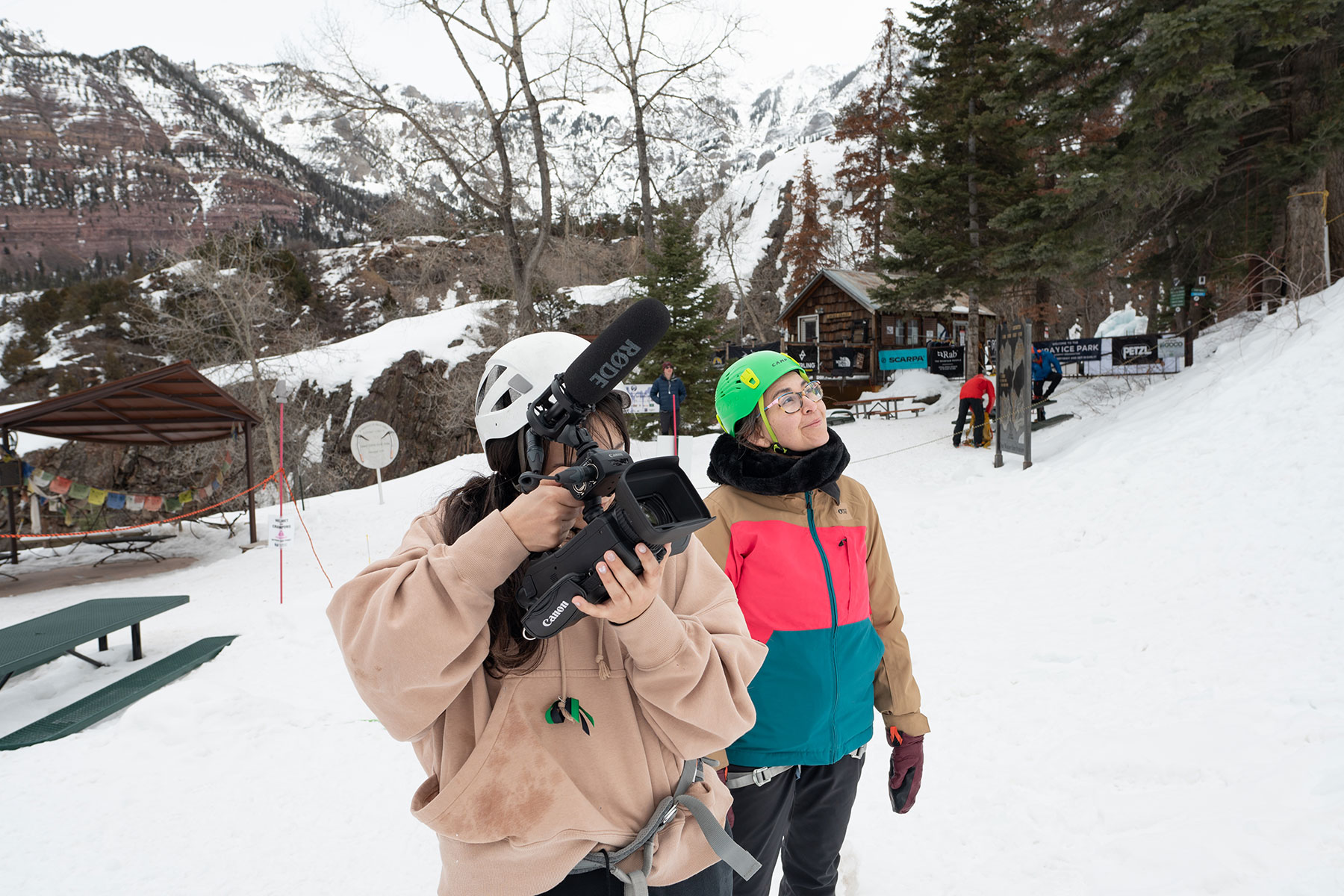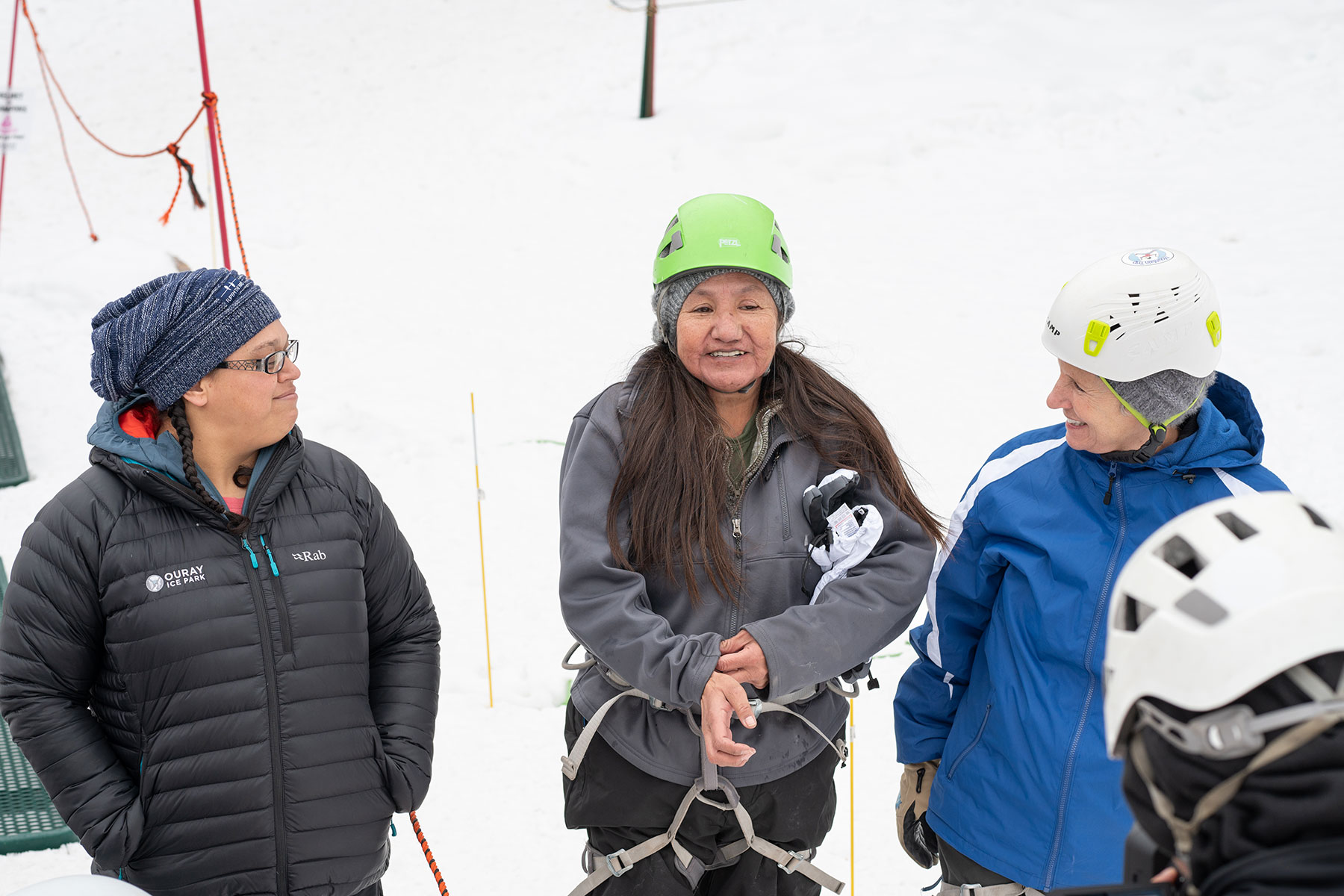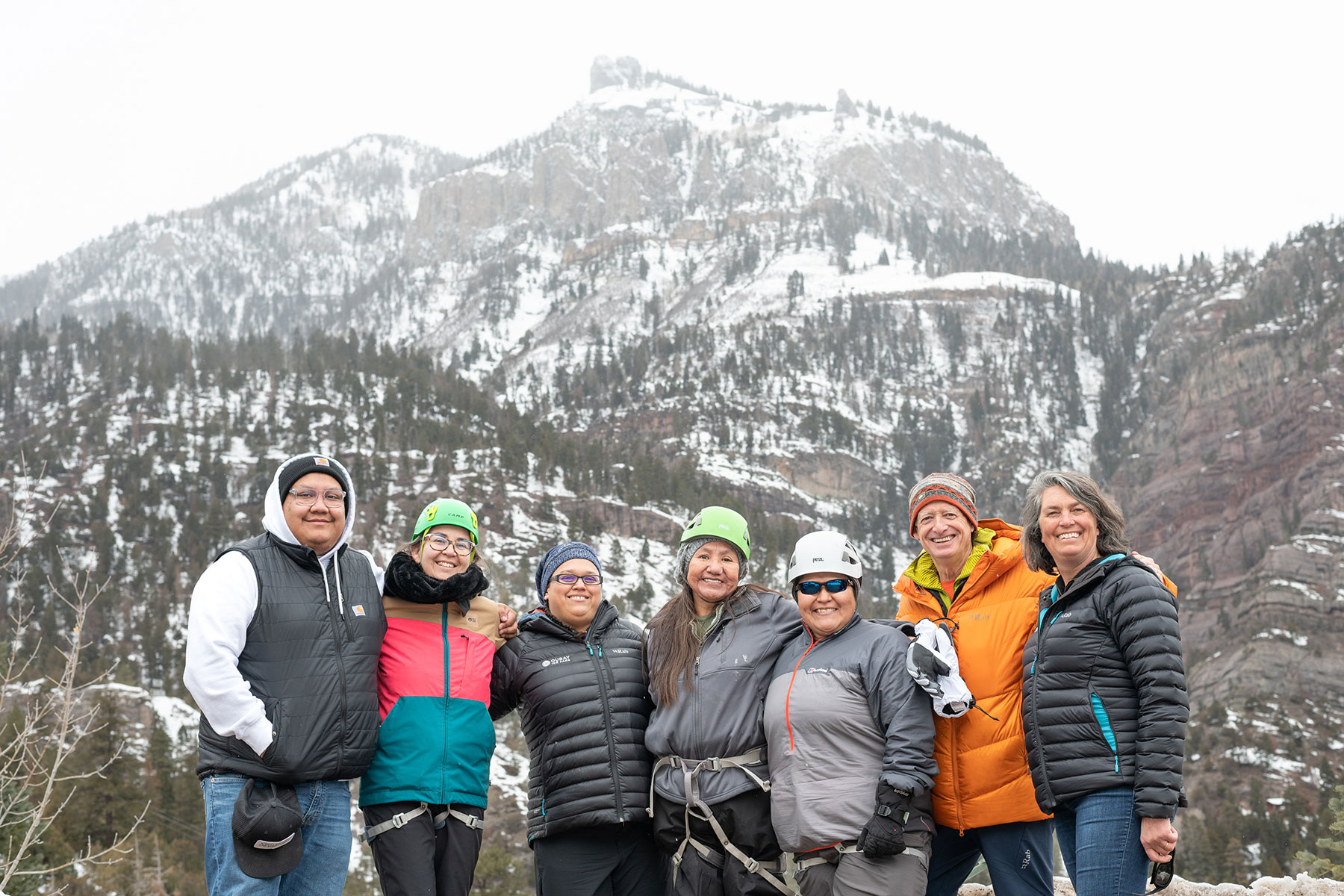Native Lens Media Fellowship turns focus to Tribe








The Southern Ute Indian Tribe welcomed members of the Native Lens Media Fellowship to learn about story development, production, and post-production practices during a weeklong workshop, which took place from Monday, Feb. 27 — Friday, March 3. The fellows produced two short films that premiered in a showcase during the Durango Independent Film Festival on Saturday, March 4. Fellows Shannon Spencer, Israel Duran, and Laelah Jaye-Kizzia worked to create a film about Indigenous Health featuring Southern Ute tribal elder Cassandra Atencio, Indigenous youth Rhianna Carel, Cyrus Naranjo, Yllana-Chanelle Howe, and Bird Red as they learn ice climbing techniques at the Ouray Ice Park in Ouray, Colo. — the ancestral homelands to the Ute people.
Native Lens and Vision Maker Media had announced the first Native Lens Media Fellowship in early Dec. 2022, the fellowship gives Indigenous youth the opportunity to learn the craft of video production and digital storytelling. Seven fellows learned hands-on from Indigenous film director, producer, and writer Brooke Pepion Swaney who is best known for her films, “Daughter of a Lost Bird,” “Ok Breathe Auralee,” and “Buster’s Mal Heart.” The fellowship took place in person and on location throughout the Southern Ute landscape, three Native Lens fellows highlighted Indigenous health and what it means in terms of the Ute people and how they practice good health. Fellows Shannon Spencer, Israel Duran, Laelah Jaye-Kizzia worked alongside employees of SunUte Community Center, Behavioral Health, and the Cultural Preservation Department to film interviews and their experiences ice climbing on a trip to the Ouray Ice Park.
“Working with them [community members] was amazing – everyone was super supportive of what we were trying to achieve. This whole experience couldn’t have been done without any participants.” Spencer said. “Shout out to everyone that helped make this happen–shout out to Cassandra and everyone at Southern Ute, you know their energy was immaculate and it felt like I got invigorated through this experience.”
Native Connections Program Specialist, Precious Collins suggested the idea of ice climbing after being approached by Fellowship Instructor, Brooke Pepion Swaney and SunUte Director, Robin Duffy-Wirth. “When we talk about Indigenous health, we are thinking about many things such food, hunting, hiking, and overall relationship to the land and ceremony– in this conversation [with Swaney and Duffy-Wirth] I referenced back to my experience at the All In Ice Fest in Ouray this past January and hiking into the canyon and going ice climbing with some of the Southern Ute Cultural Preservation team and elder Cassandra Atencio. Not only were we in a group of Indigenous climbers and guides, but the event itself was a BIPOC event that also included Queer and Trans climbers,” Collins said. “Based off of that experience and seeing Cassandra hike in the canyon and climb that ice wall, I thought it would be great to duplicate or share a similar experience with the young Native film makers and some of our own youth in the community.”
Following this conversation between Collins, Swaney, and Duffy-Wirth a trip to ice climb at the Ouray Ice Park is coordinated via Collins and Ouray Ice Park Events Coordinator, Christina Lujan. On Tuesday, Feb. 28 the group traveled to neighboring Ouray, Colo. to begin the filming process. This trip provided participants with all necessary climbing equipment and the opportunity to learn from professional ice climbing guides. Everyone takes to the ice throughout the afternoon, each participant explored the ice and for many this experience is a first. Many climbers agreed that this experience was eye opening and served as a positive emotional release, reflecting on themselves and being open to trying new things proved to be a common theme.
Collins reflects on the trip and expresses that it is important to practice making outdoor connections, promoting good mental health. “It’s important that we make space for outdoor connections. Mother nature has a great way of being an outlet for the stress and worries we sometimes might hold,” Collins said. “It’s okay not to feel okay. It’s important that when we find ourselves finding it hard to understand our emotions and feelings or maybe we just can’t ‘shake it off,’ that it is okay to reach out for professional help.”
Tribal Historic Preservation Officer, Cassandra Atencio played a key role in the trip and within the film serving as a mentor for all involved in this creative process. In a brief interview, Atencio shared her pride in the filmmakers for being open to trying new things and to the community members involved for being willing to share their cultural knowledge and exploring ancestral lands. “Seeing the kids there and their eyes light up, and then trying something different —everybody, even the young filmmakers coming out of their box and reconnecting, that was the key moment for me,” Atencio said. “Looking around and feeling very proud, looking at all of you – big shout out to Precious and Robin, all of us coming together to make this happen was very inspiring about what teamwork can do and moving forward we want to continue to bring the youth out here to do different programs.”
After a week of filming and editing, the Native Lens Fellows premiered their films at this year’s Durango Independent Film Festival located at the Durango Arts Center. The small theater is filled with local Durango viewers, supporters of the Native Lens fellows, and the people highlighted in each film short. Fellows — Spencer, Duran, and Kizzia shared highlights from their climbing experience and expressed their gratitude to the people of the Southern Ute Indian Tribe, and everyone who was involved during a brief interview following the screening event, Saturday, March 4.
“Whenever I actually got to go up on the ice and climb it was super scary, I’m really terrified of heights–when I got down to the ground it was really releasing, because I finally got over something that I haven’t been able to really approach,” Native Lens fellow Kizzia said. “I think it was really cool to experience someone else’s culture–I’d like to thank Cassandra and Precious for all of their words, and Cassandra especially we had a little moment, she’s really opened my eyes to a lot of things that I need to work on within.”
“Coming into this, I wasn’t really sure how this would affect me in any way, but it did–a lot of the youth are very smart, like [Bird Red] he’s well-spoken and reviewing the footage, going back and listening to what he had to say was pretty touching and eye opening, same with [Cyrus Naranjo],” Duran said. “Even on the way up [to Ouray] when we were in the van with [Precious Collins] she said such good things and it really resonated with me–when we premiered the film, I really hope it resonated with the audience as well.”
The trip and production proved to be a great success for those involved in this unique experience, moving forward participants hope to continue exploring Indigenous health and being open to trying new things.
Upon reflection, Collins shares on the importance of connecting to nature as Indigenous people. “Mother nature has a way to teach us and humble us, we get an opportunity to also connect to our ancestors in doing and seeing much of what they have seen, did, and heard. It’s a beautiful experience, one that you can’t get from working out in a box.”








